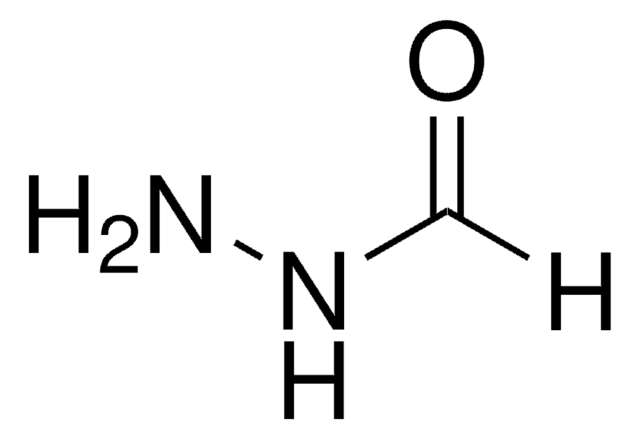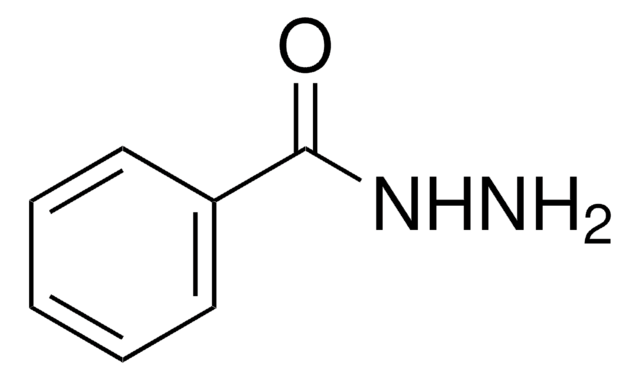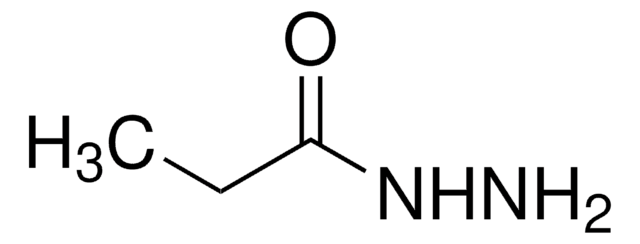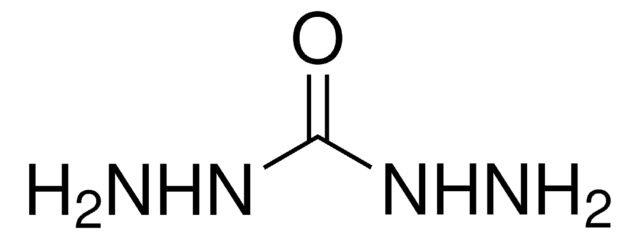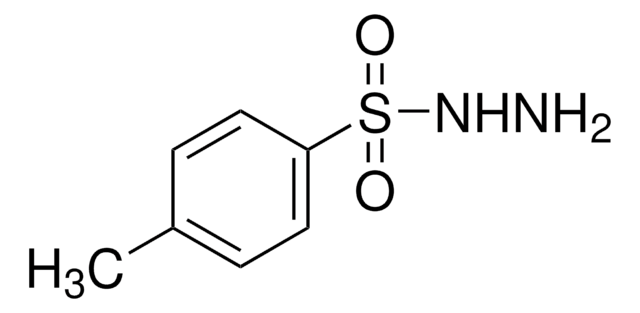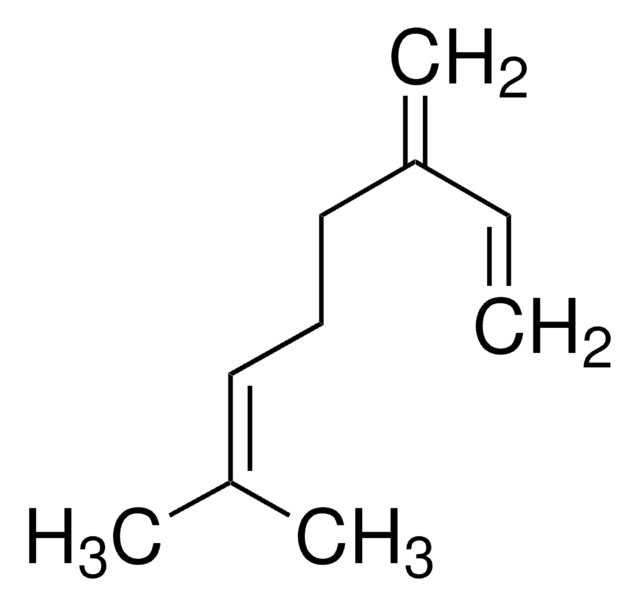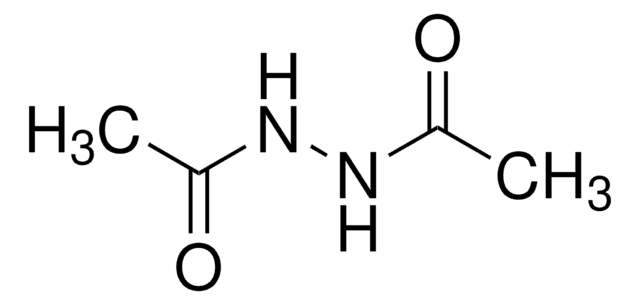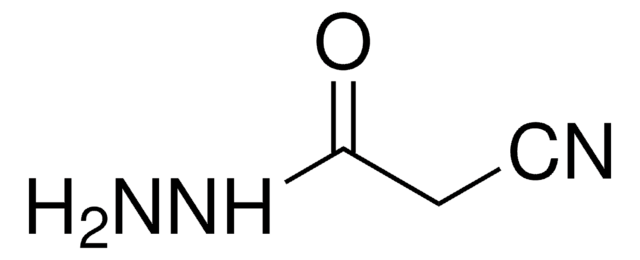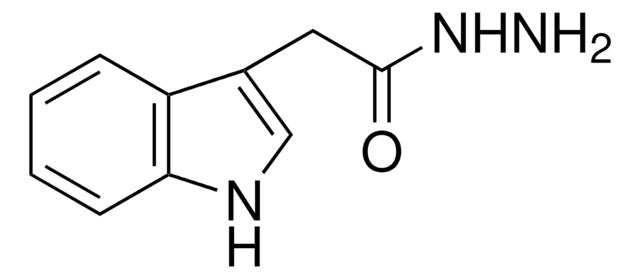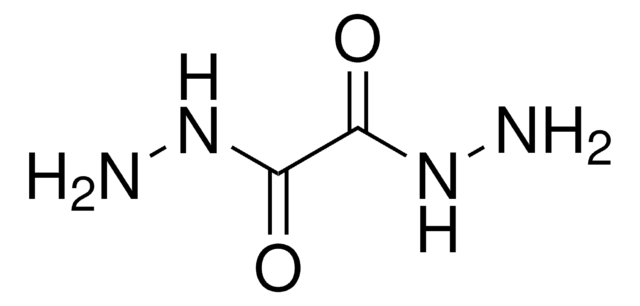Wichtige Dokumente
A8309
Acethydrazid
90%
Synonym(e):
Acetylhydrazin, Essigsäurehydrazid
About This Item
Empfohlene Produkte
Qualitätsniveau
Assay
90%
Form
flakes
Verunreinigungen
<10% acetic acid
bp
129 °C/18 mmHg (lit.)
mp (Schmelzpunkt)
58-68 °C (lit.)
SMILES String
CC(=O)NN
InChI
1S/C2H6N2O/c1-2(5)4-3/h3H2,1H3,(H,4,5)
InChIKey
OFLXLNCGODUUOT-UHFFFAOYSA-N
Suchen Sie nach ähnlichen Produkten? Aufrufen Leitfaden zum Produktvergleich
Verwandte Kategorien
Allgemeine Beschreibung
Anwendung
Signalwort
Danger
H-Sätze
Gefahreneinstufungen
Acute Tox. 3 Oral - Carc. 2 - Eye Irrit. 2 - Muta. 2 - Skin Irrit. 2
Lagerklassenschlüssel
6.1C - Combustible acute toxic Cat.3 / toxic compounds or compounds which causing chronic effects
WGK
WGK 1
Flammpunkt (°F)
235.4 °F - closed cup
Flammpunkt (°C)
113 °C - closed cup
Persönliche Schutzausrüstung
dust mask type N95 (US), Eyeshields, Faceshields, Gloves
Hier finden Sie alle aktuellen Versionen:
Besitzen Sie dieses Produkt bereits?
In der Dokumentenbibliothek finden Sie die Dokumentation zu den Produkten, die Sie kürzlich erworben haben.
Kunden haben sich ebenfalls angesehen
Unser Team von Wissenschaftlern verfügt über Erfahrung in allen Forschungsbereichen einschließlich Life Science, Materialwissenschaften, chemischer Synthese, Chromatographie, Analytik und vielen mehr..
Setzen Sie sich mit dem technischen Dienst in Verbindung.